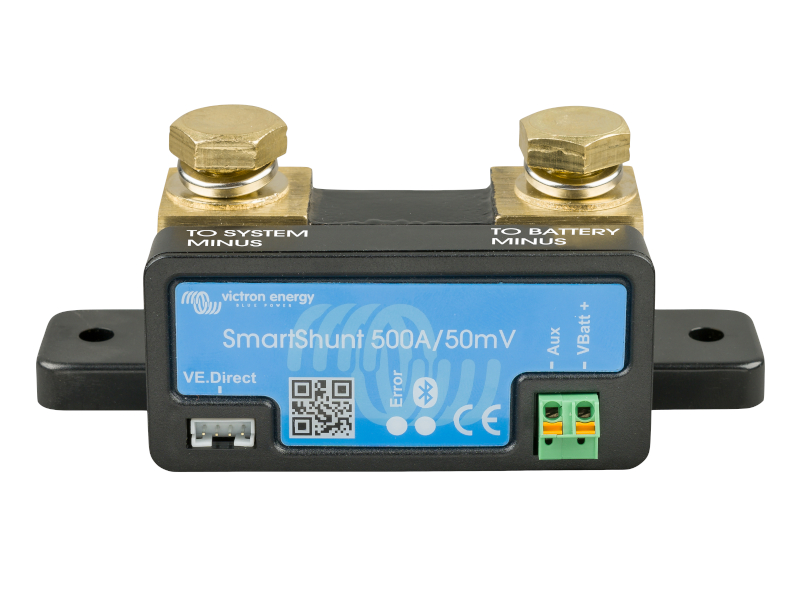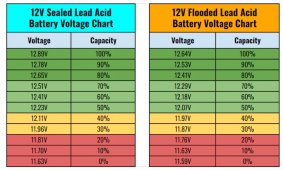Hi, bit of a newbie enthusiast here…
I have a Motorhome with a Panasonic 245 HIT panel, 2 x efb 100amp hr each leisure batteries and an EPever duoracer DR3210N mppt solar controller.
I just had a few ‘basic’ questions that someone maybe able to help me with as the instruction manual give info but doesn’t really explain things too well!
I’ve put in an MT 11 monitor as the actual controller is in a bit of a tight spot…
Firstly, the little visualised battery charge icons for the hab and starter batts. At night, no EHU, no solar input, they are showing about half full but the voltage on the monitor is 12.7v. I have heard these indicators of battery level are fairly rough, just seems a bit blah?
The some of the other info the display is giving, I’m not sure as to what it actually relates to.
It’s Devon, UK, around 09:00am, a bit cloudy and mixed.
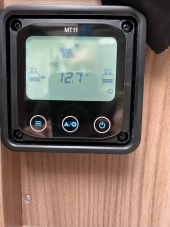
I read as the hab battery is currently 12.7 v (more or less full?), Solar is starting to kick in.

Panels are generating 0.8amp…

…and 2.7 amps are being put into the hab battery.
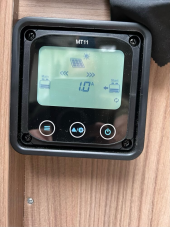
Then after a bit of more light, there’s enough to charge both Hab and starter batteries, with 1.0amp going to the starter…

And 7.7amp going to the hab.
The hab battery is now showing 13.5v. Is that the voltage that is being charged at or the actual voltage of the battery currently?
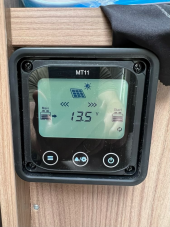
When the battery is ‘full’, whatever that is, does the amp to the hab batter go down from its say 7.7amp to zero or just a very low reading?
I expect I’m being very simplistic about it here, I just wanted to know what to look out for on the monitor say when it’s sunny and the battery is fully charged! Do the little chevron type arrows towards the batteries go out?
I have the mppt unit set as Flooded 12v (as directed by the battery supplier) and that apparently has parameters of:
Over Voltage Disconnect Voltage 16.0V
Charging Limit Voltage 15.0V
Over Voltage Reconnect Voltage 15.0v
Equalize Charging Voltage 14.8v
Boost Charging Voltage 14.6v
Float Charging Voltage 13.8v
Boost Reconnect Charging Voltage 13.2v
Low Voltage Reconnect Voltage 12.6v
Under Voltage Warning Reconnect Voltage 12.2v
Under Volt. Warning Volt. 12.0v
Low Volt. Disconnect Volt. 11.1v
Discharging Limit Voltage 10.6
Equalize Duration (min.) 120
Boost Duration (min.) 120
Any help or guidance will be gratefully received.
Cheers,
Peter
Sent from my iPad
I have a Motorhome with a Panasonic 245 HIT panel, 2 x efb 100amp hr each leisure batteries and an EPever duoracer DR3210N mppt solar controller.
I just had a few ‘basic’ questions that someone maybe able to help me with as the instruction manual give info but doesn’t really explain things too well!
I’ve put in an MT 11 monitor as the actual controller is in a bit of a tight spot…
Firstly, the little visualised battery charge icons for the hab and starter batts. At night, no EHU, no solar input, they are showing about half full but the voltage on the monitor is 12.7v. I have heard these indicators of battery level are fairly rough, just seems a bit blah?
The some of the other info the display is giving, I’m not sure as to what it actually relates to.
It’s Devon, UK, around 09:00am, a bit cloudy and mixed.

I read as the hab battery is currently 12.7 v (more or less full?), Solar is starting to kick in.

Panels are generating 0.8amp…

…and 2.7 amps are being put into the hab battery.

Then after a bit of more light, there’s enough to charge both Hab and starter batteries, with 1.0amp going to the starter…

And 7.7amp going to the hab.
The hab battery is now showing 13.5v. Is that the voltage that is being charged at or the actual voltage of the battery currently?

When the battery is ‘full’, whatever that is, does the amp to the hab batter go down from its say 7.7amp to zero or just a very low reading?
I expect I’m being very simplistic about it here, I just wanted to know what to look out for on the monitor say when it’s sunny and the battery is fully charged! Do the little chevron type arrows towards the batteries go out?
I have the mppt unit set as Flooded 12v (as directed by the battery supplier) and that apparently has parameters of:
Over Voltage Disconnect Voltage 16.0V
Charging Limit Voltage 15.0V
Over Voltage Reconnect Voltage 15.0v
Equalize Charging Voltage 14.8v
Boost Charging Voltage 14.6v
Float Charging Voltage 13.8v
Boost Reconnect Charging Voltage 13.2v
Low Voltage Reconnect Voltage 12.6v
Under Voltage Warning Reconnect Voltage 12.2v
Under Volt. Warning Volt. 12.0v
Low Volt. Disconnect Volt. 11.1v
Discharging Limit Voltage 10.6
Equalize Duration (min.) 120
Boost Duration (min.) 120
Any help or guidance will be gratefully received.
Cheers,
Peter
Sent from my iPad



